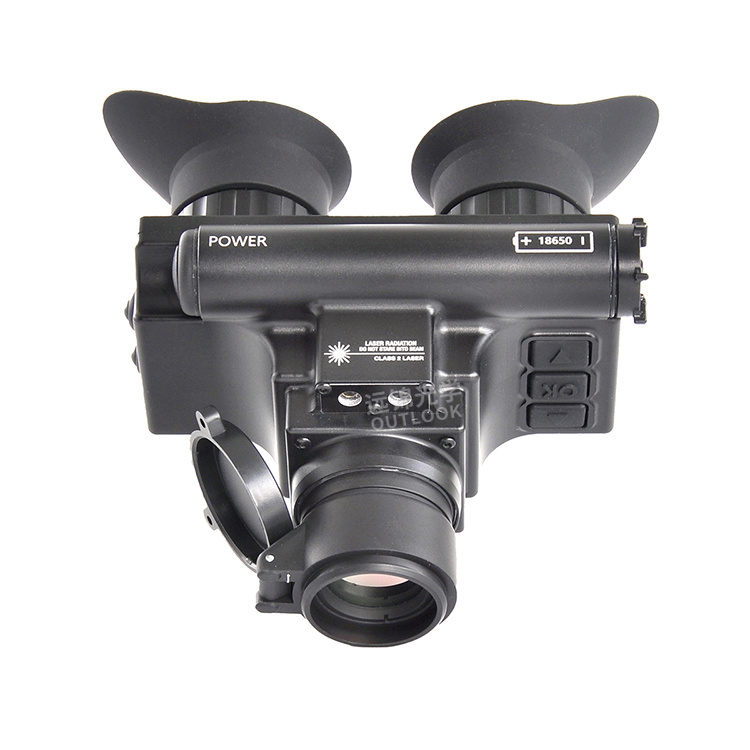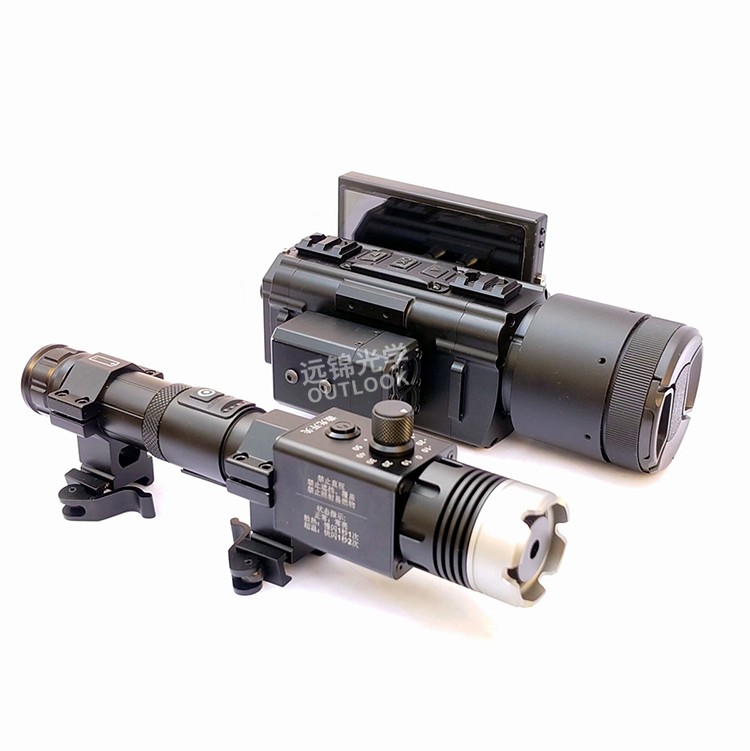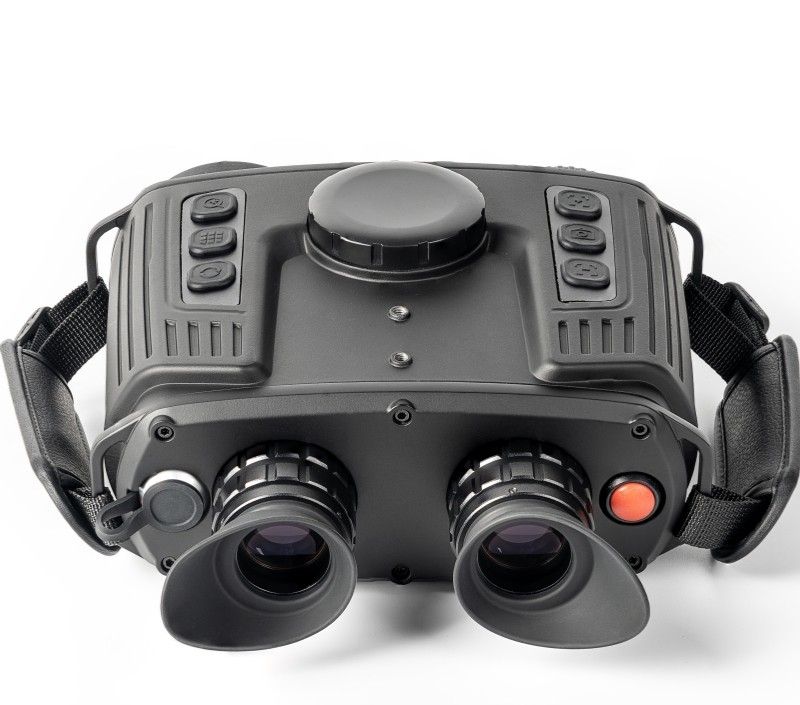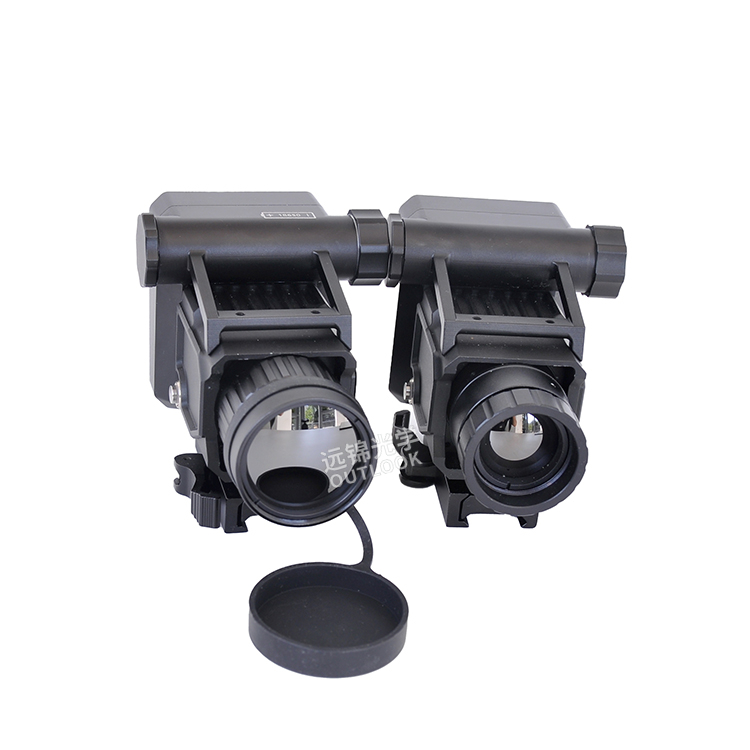1. The core components of a thermal imaging device can be divided into the following parts:
A complete thermal imaging system is like a special digital camera, but it "sees" heat (infrared radiation) rather than visible light.
Below, we will explain in detail the functions and roles of each component of the thermal imager.
Main Components of a Thermal Imager
1. Optics Lens of a Thermal Imager
Function: Colects infrared radiation emitted by the object being measured and focuses it onto the focal plane of the infrared detector.
Features: Ordinary glass blocks infrared radiation, so thermal imager lenses are typically made of specialized materials with extremely high infrared transmittance, such as germanium (Ge), zinc sulfide (ZnS), and zinc selenide (ZnSe). These materials are expensive and often have special anti-reflection coatings on their surfaces.
2. Infrared Detector of a Thermal Imager
Function:
Converts received infrared radiation energy into an electrical signal. The performance of the detector directly determines the resolution, sensitivity, and image quality of the thermal imager. Types:
Cooled detectors: The detector chip is encapsulated in a vacuum dewar and cooled to extremely low temperatures (e.g., -196°C). This type of detector has extremely high sensitivity and is primarily used in high-end military and scientific research fields. However, it is complex, costly, and slow to start up.
Uncooled detectors: This technology is used in mainstream civilian products. The detector operates at room temperature and generates an electrical signal by generating a change in resistance or potential after a thermosensitive material absorbs infrared radiation. It is compact, consumes little power, is low cost, and has a fast start-up.

3. Readout Integrated Circuit of a Thermal Imager
Function: Directly connected to the detector chip (often referred to as the "detector engine"). It reads the weak electrical signals generated by millions of tiny sensing units (pixels) on the detector, performs preliminary integration and amplification, and then outputs them to subsequent processing systems.
4. Signal Processing System of a Thermal Imager
Function: Receives the electrical signals from the ROIC and performs a series of complex processing steps:
Amplification: Amplifies the weak signal. Analog-to-Digital Conversion (A/D Conversion): Converts analog electrical signals into digital signals for computer processing.
Non-Uniformity Correction (NUC): Due to slight variations in the responsivity of each pixel, fixed pattern noise can be generated in the image. This must be corrected in real time using an algorithm and is a critical step in obtaining clear images.
Blind Pixel Replacement: Replaces failed pixels on the detector.
5. Image Processing Engine of a Thermal Imager
Function: Further processes the digitized signal to generate the thermal image we ultimately see.
Pseudo-Color Application: Maps signals of different temperatures to different colors (such as iron red or rainbow), making it easier for the human eye to distinguish temperature differences.
Thermometry Calculation: Accurately calculates the absolute temperature of each point based on signal strength.
Image Enhancement: Improves contrast, sharpness, and other aspects.
6. Display Unit of a Thermal Imager
Function: Displays the final thermal image. Typically, this is an LCD or OLED screen integrated into the thermal imager.
7. Control Circuitry and Software of a Thermal Imager
Function: This is the "brain" of the thermal imager, responsible for controlling the entire system's operations, including:
User Interface (UI): Provides menus, operating buttons, and other functions.
Power Management: Manages battery power.
8. Housing and Mechanical Structure of a Thermal Imager
Function: Protects the delicate components within from environmental factors such as shock, dust, and moisture. Typically, it provides waterproof, dustproof (IP rating), and impact resistance.
II. Core Thermal Imaging Parameters
The core thermal imaging parameters are key indicators that measure performance and determine its application scenarios. Understanding these thermal imaging parameters is crucial for selecting the right thermal imaging product. The following are several core parameters of thermal imaging, along with their meaning and importance:
1. Resolution of Thermal Imaging Device- Image Clarity
Detector Resolution:
This refers to the number of physical pixels on the infrared detector chip, typically expressed as width × height (e.g., 640 × 480).
Importance: This is the most fundamental resolution, directly determining image clarity and detail. The higher the resolution, the clearer and farther objects can be seen.
2. Sensitivity of Thermal Imaging Device - The ability to detect small temperature differences
Name: Noise Equivalent Temperature Difference (NETD).
Definition: This value measures the smallest temperature difference a thermal imager can detect. For example, a NETD of ≤ 30 mK (milliKelvin) indicates that the camera can detect a temperature difference of at least 0.03°C.
Importance: The smaller the NETD value, the better the performance. Highly sensitive thermal imagers produce very smooth, low-noise images with rich detail. Low-sensitivity thermal imagers, on the other hand, produce images that appear blurry and noisy (similar to the "snowy" screen on old televisions), making it difficult to distinguish targets with small temperature differences. This is a core metric for measuring detector performance.
3. Frame Rate of Thermal Imaging Device - Image Smoothness
Definition: The number of times a thermal imager generates and displays a complete image per second. Measured in Hertz (Hz). For example, 30 Hz means 30 frames are refreshed per second.
Importance: A higher frame rate results in a smoother video stream, enabling clearer capture of fast-moving objects. Images with lower frame rates (e.g., 9 Hz) exhibit significant stuttering and lag, making them ideal only for capturing static scenes. Fully real-time video typically requires ≥ 25/30 Hz.

III. What is a Thermal Imaging Detector? How to Choose a Thermal Imaging Detector?
Part 1: What is a Thermal Imaging Detector?
A thermal imaging detector, also known as an infrared detector or focal plane array (FPA), is the most core, technologically advanced, and expensive component in a thermal imager. It functions similarly to the CMOS/CCD sensor in a digital camera, but their operating principles are completely different.
A digital camera sensor receives visible light photons, whose energy strikes the sensor, generating an electrical signal.
A thermal imaging detector receives infrared radiation (heat) emitted by an object and uses the thermal or photon effects of this radiation to generate an electrical signal.
Simply put, a thermal imaging detector is a chip that converts heat into electrical signals. Subsequent circuitry then processes these electrical signals into the thermal image we see.
Two major types of thermal imaging detector technologies:
Refrigerated Thermal Imaging Detectors
Working Principle: The detector chip is encapsulated in a vacuum micro-refrigerator (Dewar flask) and cooled to an extremely low temperature (e.g., -196°C). The goal is to significantly reduce the detector's own noise, making it exceptionally sensitive to extremely weak thermal signals.
Features:
Advantages: Extremely high performance, excellent NETD (Net Thermal Determination), capable of resolving extremely small temperature differences; long detection range.
Disadvantages: Extremely expensive, large, heavy, high power consumption, slow startup (requires several minutes of cool-down time).
Applications: High-end military (missile guidance, airborne electro-optical pods), cutting-edge scientific research, satellite remote sensing, etc.
Uncooled Detector of Thermal Imagers
Working Principle: The detector operates at room temperature. It uses a microbridge structure made of a special heat-sensitive material (such as vanadium oxide or polycrystalline silicon). Infrared radiation causes the material's temperature to change, resulting in a change in its resistance or potential, which in turn generates an electrical signal.
Features:
Advantages: Low cost, small size, light weight, low power consumption, fast startup (seconds).
Disadvantages: Performance and sensitivity are generally lower than those of cooled detectors.
Applications: The absolute mainstream in the civilian sector. These include nearly every field, including industrial inspection, firefighting, medical care, security, automotive night vision, outdoor hunting, and scientific research.

Part 2: How to Choose a Thermal Imaging Detector?
Choosing a detector is essentially about finding the optimal balance between your application scenario and budget. The following are key parameters to consider and a selection process:
The Core Decision-Making Process
After clarifying your application scenario, you should focus on the following technical parameters:
Material & Technology
Vanadium Oxide (VOx): Currently the mainstream and preferred choice among uncooled detectors. It generally offers better thermal sensitivity and image uniformity, and is considered a high-performance option.
Amorphous Silicon (a-Si): Another common technology, this may be lower in cost, but may be slightly inferior to VO in some performance metrics.
Selection Recommendation: Prioritize detectors based on VOx unless your budget is extremely limited.
Summary and Final Recommendations
For most civilian applications, such as industrial, security, and fire protection:
Choose an uncooled detector made of vanadium oxide (VOx) material with a 12μm pixel pitch.
For extremely price-sensitive consumer applications:
Consider polysilicon-based detectors with lower resolutions (e.g., 256x192 or lower).
For extreme applications such as high-end scientific research, military, and high-temperature object detection:
Consider expensive cooled mid-wave infrared (MWIR) detectors.
When selecting a thermal imaging device, first clarify your application needs (e.g., electrical inspection, scientific research, or outdoor observation). Then, comprehensively consider the core parameters of the thermal imaging device to find the optimal balance between performance and budget.
thermal imager thermal imager thermal imager Detector Detector Detector Detector thermal imager Detector


